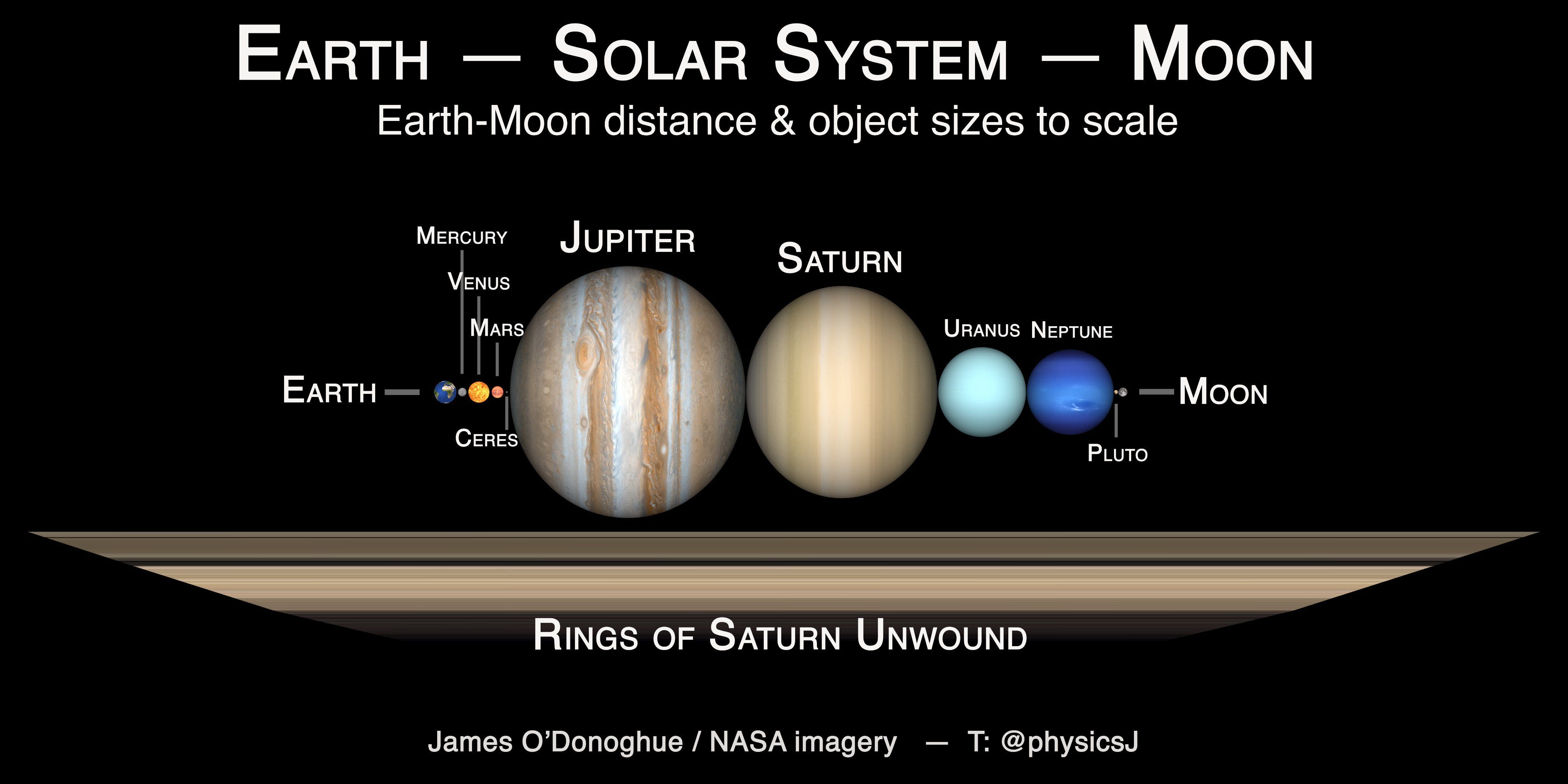The rings are huge yet tiny the main rings could cover almost the entire distance between earth and the moon yet they are about half a mile less than a kilometer thick

The Enormous Yet Delicate Rings of Saturn

Saturn, the majestic gas giant residing in our solar system, is renowned for its captivating rings. These remarkable structures have fascinated astronomers, scientists, and space enthusiasts for centuries. The rings of Saturn are a true marvel of nature, both in terms of their grandeur and their delicate dimensions.
The Astonishing Scale: Covering Vast Distances
The first astonishing fact about Saturn’s rings is their vast scale. If we were to stretch the main rings from end to end, they would nearly cover the entire distance between Earth and the Moon. Imagine the sheer magnitude of this cosmic tapestry, extending over 384,400 kilometers! Such an immense expanse is a testament to the awe-inspiring nature of the ring system.
However, despite this monumental size, the rings are astonishingly thin. The main ring system, known as the A, B, and C rings, measures a mere half a mile in thickness, which is less than one kilometer. Picture a delicate layer, thinner than the width of many city streets, spread across a distance that can engulf the Earth-Moon divide. It is this delicate balance of immense size and ethereal fragility that makes Saturn’s rings so mesmerizing.
The Composition: A Symphony of Ice and Debris

The rings of Saturn are composed of countless particles, predominantly made up of ice and various types of rocky debris. These particles range in size, from tiny grains the size of sand to sizable chunks that may reach meters in diameter. The combination of icy particles and rocky fragments creates a captivating tapestry that reflects sunlight and gives Saturn its distinctive appearance.
While the exact formation of Saturn’s rings remains a subject of scientific investigation, theories suggest that they may be the remnants of a moon or other celestial object that wandered too close to the planet’s powerful gravitational forces. As the gravitational pull of Saturn and its moons exerted immense tidal forces on the straying object, it eventually disintegrated, forming the captivating rings we observe today.
The Unique Dynamics: A Dance of Beauty and Mystery
Saturn’s rings possess intricate dynamics, influenced by the planet’s gravitational pull and its numerous moons. The gravitational interactions between Saturn and its moons cause disturbances in the ring system, creating waves, gaps, and braids within the ethereal beauty. These intricate patterns, observed by space probes and telescopes, contribute to the enigmatic allure of Saturn’s rings.
Scientists continue to study Saturn’s rings in great detail, uncovering their composition, structure, and ever-changing dynamics. The exploration of these cosmic wonders provides valuable insights into the formation and evolution of our solar system, ultimately deepening our understanding of the universe we inhabit.
In conclusion, the enormous yet delicate rings of Saturn are an extraordinary sight to behold. Their immense size, spanning the distance between Earth and the Moon, and their astonishing thinness of less than a kilometer create a captivating juxtaposition. Composed of ice and debris, these rings hold the secrets of the celestial dance between planets and their moons. As we continue to explore the mysteries of Saturn’s rings, we uncover the wonders of our cosmic neighborhood, marveling at the vastness and intricacy of the universe.
Tags
Share
Related Posts
Quick Links
Legal Stuff

